The Spanish village hidden in a cave
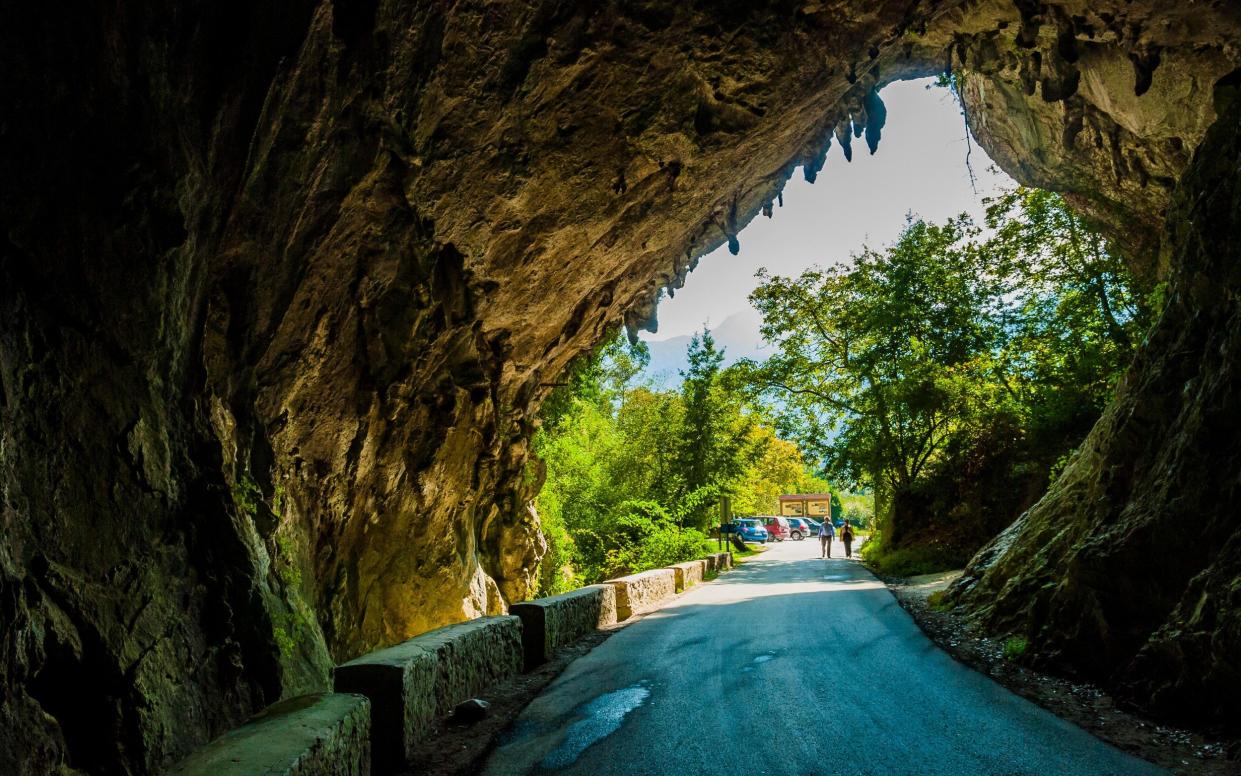
It was almost 10pm, and we were singing along to Sting – inspired by the music playing at the petrol station where we had just been stockpiling chorizo and salted almonds (nothing is quite as Spanish as the random music playing in incongruous public spaces) – driving west from Santander, on Spain’s northern coast.
Immediately after we’d passed the sign welcoming us to Asturias, the flattish Cantabrian valley floors had given way to the series of dramatic outcrops that make Asturias home to some of the most jaw-dropping beaches in Spain. The Picos de Europa, a range that spreads over northern Spain and includes 14 peaks of more than 8,500ft, practically collide with the A-8 road, flat faces of grey, flinty rock often the only thing visible from a driver’s side window.
From there, we had weaved our way along a series of country roads – leaving the village of Ribadesella, climbing at first, and passing clusters of stone houses. Now, we were driving through thick, overhanging trees on the single-lane road, nothing in the night air but crickets and the smell of walnuts decaying on the forest floor.
Then, there it was. Mine was the first voice to trail off, leaving my daughters with the high harmony on the last line of Englishman in New York.
Ahead, seemingly out of nowhere, rose a gigantic calcareous formation, slate grey with mossy patches. I stopped the car and craned my neck out of the window – the wall of rock stretched out of sight above. The opening of La Cuevona de Cuevas revealed arcs of stone repeating themselves, each progressively smaller and darker. The stuff of nightmares, really. My daughters clamoured behind me – “What is it?” – and then fell silent as they followed my gaze.
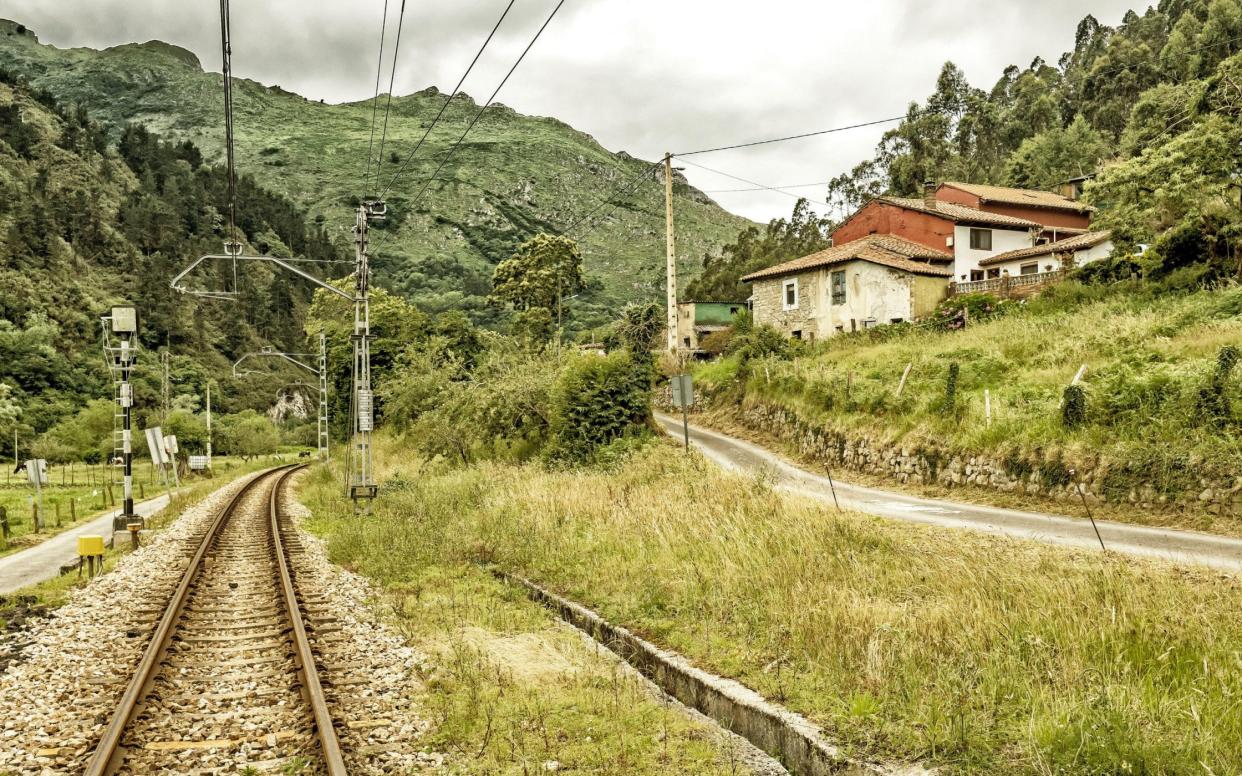
Shaking off a very real sense that we would fall into a gaping hole of nothingness, or be attacked by cave-dwelling monsters, we drove slowly through the 980ft-long hole, darkness all around us. My 15-year-old even put down her phone.
The air no longer stirred, and the echoes ranged from reassuring (our car’s motor, my daughters’ cheerful shouts) to menacing (the drip, drip of stalactites and unidentified animal sounds). I realised I was holding my breath, and then, suddenly, there was the night sky again, full of mist-clouded stars. We had passed through La Cuevona, a 980ft-long cave, and emerged into the tiny village of Cuevas.
Sometimes known as Cuevas del Agua, the village is sideswiped by a river and further entrapped by a series of steeply rising foothills, meaning that the cave – which sits slightly to the village’s north – is the only way to reach it, by car or on foot. The way through occurs naturally, drilled through the centuries by a small stream; it was eventually recognised and paved not long ago, becoming the RS-3.
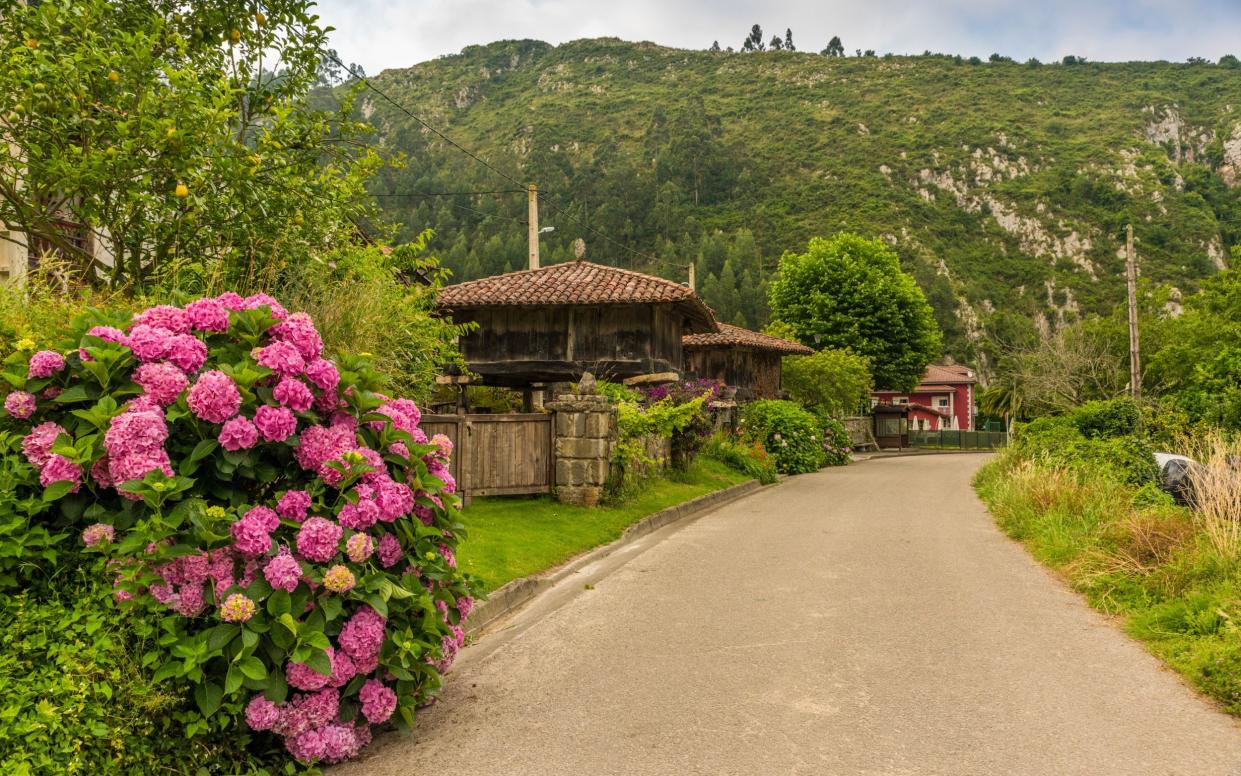
The next morning, the sun was burning off the fog, and the village and the cave looked decidedly less spooky. We ventured out of the cheery little pink cabin where we had spent the night and began to explore.
For a village of only a couple of dozen houses, Cuevas has plenty to offer – a number of hórreos (traditional wooden granaries), and a hydrangea-lined main street that is home to a chiringuito, or outdoor bar, with a load of green space for children to play.
Further down the road, a local farmer advertises “immersive farming experiences”, meaning you can watch him milk a cow, for a small fee, twice a day. A lovely ultramarine- coloured store – run by a chatty woman from Alicante, who moved to Cuevas more than a decade ago – sells local cheeses, cakes and sausages.
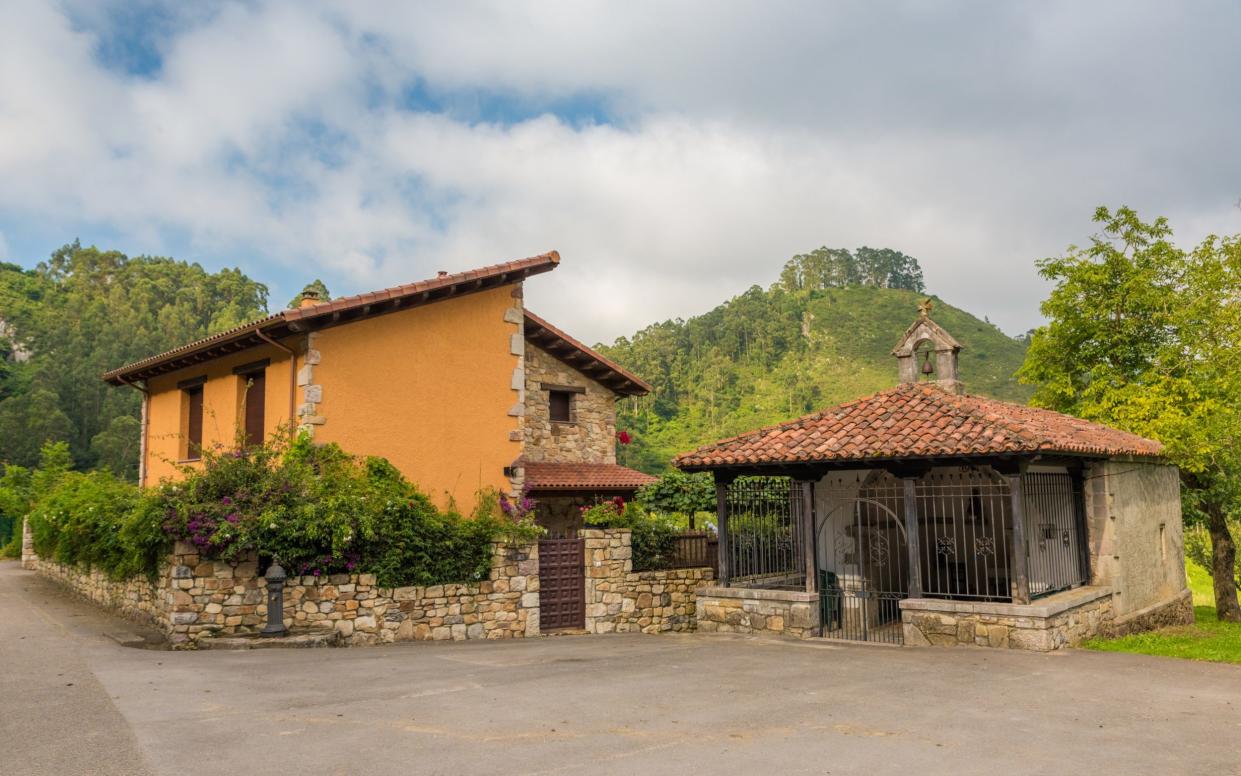
A couple of times a day, a stunted train of two carriages passes through the dusty yellow station; and a stone bench, which could easily be part of some ancient sacrificial rite, seemed to double as a stop for a bus we never saw.
We continued on our excursion, strolling south towards the mountains, past the outskirts of town, coming to a narrow wire suspension bridge over the Sella river, with a sign that warned ominously that a maximum of five people should remain 30ft apart at all times – the only other way into, or out of, Cuevas.
Amidst the numerous apple trees, we found a seat and desk fashioned from a single solid trunk, planted squarely in front of one of the far-off mountains, as if positioned at the optimum angle for poetic inspiration. I began to suspect this village had more magic than even the cave would suggest. We began to relax, feeling a growing affection for this little place, which might almost have existed in some strange parallel universe.
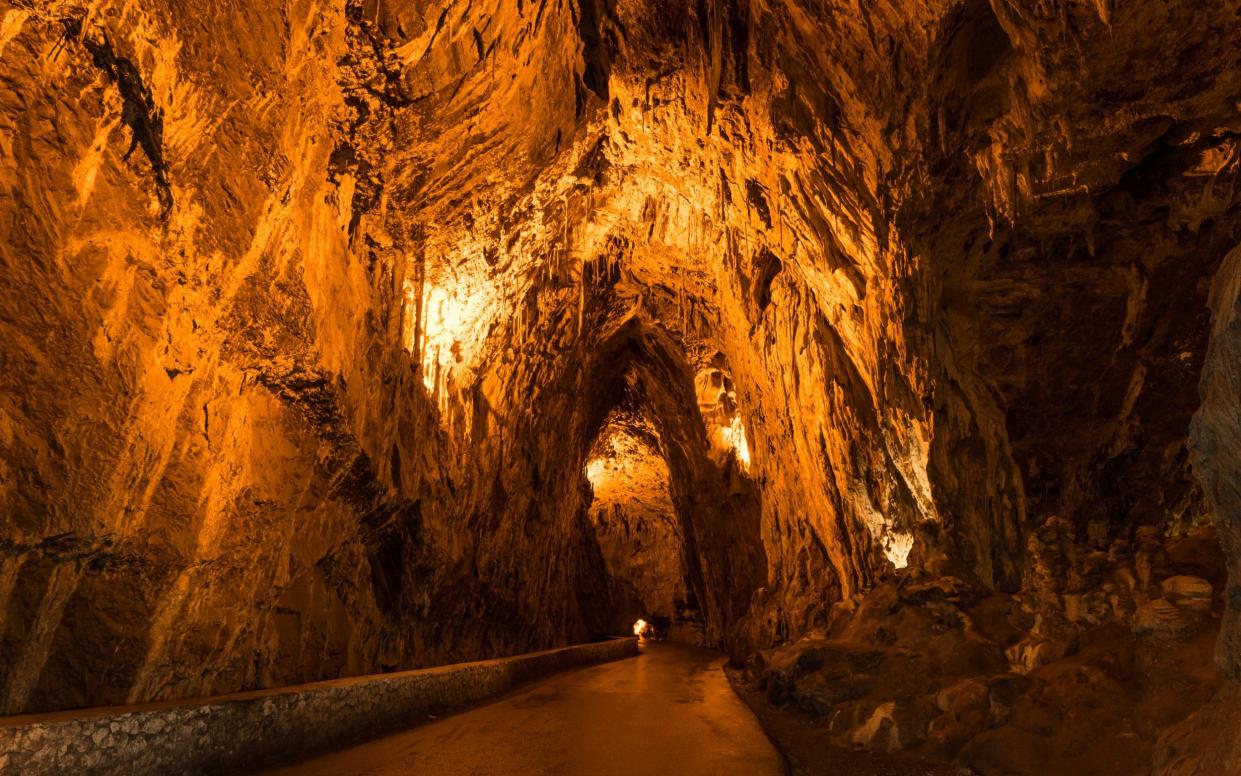
We discovered, too, that Cuevas made a fabulous base camp from which to enjoy the famously mysterious beaches of Asturias, from the Playa de Gulpiyuri – which sits landlocked and out of place in the middle of a meadow – to the Playa de Toranda, a favourite of mine for its easier access and sometimes-open beach hut.
We also found that the Sella river, from which the trickle that formed La Cuevona over thousands of years originally sprang, can be happily navigated in plastic canoes, its banks dotted with makeshift bars on the weekends and in summer months. Sometimes, tourist offices exaggerate for effect, but Asturias really is a natural paradise.
And each time we traversed the portal to Cuevas – whether it was on our way to eat fabada, the warming bean stew studded with chunks of sausage, in nearby Lastres, or coming back from a visit to the Jurassic Museum of Asturias – the drive through the cave never ceased to keep the whole car in awe. I found myself returning to the cave for quick visits – after coffee, during a run.
It seemed to hold a knowing secret, sounds of water dripping infinitely. And as we pulled out for the last time – the gentle darkness and steady drip, drip, drip now familiar comforts – it felt strangely like saying goodbye to a wise old friend.
Essentials
Ryanair flies direct from London to Santander, from £40 return. Brittany Ferries sails from Portsmouth to Santander from £80 per person one-way. Cuevas is a 1½-hour drive from Santander
Marti was a guest of Casina de Cuevas, in Cuevas (00 639 691091), a cosy two-bedroom cabin right next to La Cuevona.
For more information about Asturias, its villages and how to get around, visit turismoasturias.es


